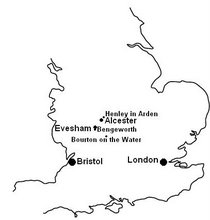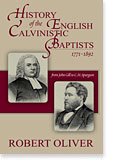In a 2015 thesis Experiencing smallpox in eighteenth-century England
Rosemary A Leadbeater makes the following references to the death of Frances Snooke (nee Seward) in 1766.
After his wife’s smallpox diagnosis in 1766 William Snooke in Bourton,
Gloucestershire recognised the importance of his role as communicator: ‘… I can’t be as cruel as not to acquaint You and D[ear]r Sister by this Post with our present mournful situation’. [Letter W. Snooke, Bourton, Gloucestershire to R. Hall, London (19 May 1766). All letters
used from this collection were kindly transcribed and provided by Michael Rendell.] ...
William Snooke
and his brother-in-law by marriage, Richard Hall of London, were unaware or unconcerned about the
risks of infection through an intermediary. Snooke was unconcerned about the presence of his wife’s
nine-year-old nephew, Francis (Hall’s son) in the infected household when his wife, Frances, had the
disease in 1766.27 On the contrary, on the day before her death, and as Snooke actively cared for his
wife he reported that his guest (Francis) was ‘in no way troublesome’ and ‘ … the little Rogue is now
my Bedfellow’. It is possible that Francis had already had the disease in infancy with his older sister
eight years earlier, although it was not noted in his father’s diary where other family illnesses were
recorded. Snooke was a financier, operating a loan system among wealthy families, however,
despite his influential connections, we do not know whether or not he was up-to-date on medical
thinking on the risks of smallpox transmission. His correspondence contradicts the other testimonies
above; inconsistencies such as these are not easy to explain but investigated more fully in the section
on nursing. [Letter (24 May 1766)] ...
On Day 7 of her
illness (see Table 5.1) Snooke wrote as follows:
My dear wife has had hardly any Sleep the last Night, this Morning threw up 2 or 3 times what she took; Vomiting is very difficult to the Dr Creature …. In her face ‘tis a small Sort and very thick, there most probably ‘twill be confluent; on her Breast ‘tis not so full, being a larger Sort, the same on her Arms and Legs. By tomorrow morning ‘tis that all will be out. She complains a little of her Throat … proves there are no dangerous Symptoms. [19 May 1766]
Frances Snooke was severely affected by pustules on her face, breast and limbs although she was
termed as having ‘no dangerous symptoms’ within the same letter. Clearly, Snooke did not think that
the disease was life-threatening and did not anticipate his wife’s death. He continued in the letter that
a physician would be sent for, ‘If [my italics] the Dr pronounces her case dangerous’. On the day
before her death he wrote that ‘the discouragements’ were yet considered to be ‘less than the encouragements’.[24 May 1766] In this case, Snooke was incorrect in thinking that his wife’s case was not severe.
Perhaps he was aware of the work of Dr John Woodward, eminent physician and Fellow of the Royal
Society and Royal College of Physicians who published regularly, including his State of Physick on the
treatment of smallpox, in 1718.50 Woodward advised the importance of physicians and carers,
‘continually keep[ing] up the Hopes of the [smallpox] Patient’51 and Snooke’s optimistic commentary
may have been coloured by this. However, he was unlikely to have been writing in the presence of his
patient and it is supposed that he had no reason to be unrealistic about her condition; recovery from
smallpox was thought likely even at this stage in the illness. ...
Within the text of the letter quoted above Snooke reports, ‘The Dr says
her Lowness of Spirits today is the only unfavourable Circumstance’. [19 May 1766] For the Snookes, lowness of
spirits was perceived to be the only dangerous symptom – and one which had been recognised by
Diemerbroeck approximately 70 years earlier as ‘… an oppression of the heart with Melancholy’. Snooke was unaware of transmission of smallpox through third party but he and his doctor were
conscious of the implications of a troubled state of mind in the smallpox patient, knowledge which
shows that people possessed a range of attitudes which were informed by several sources. ...
A particularly revealing example of spousal sensitivity comes from William Snooke’s
correspondence with his wife’s brother-in-law, offering an insight into the upheaval to normal life
patterns when caring for a spouse. Snooke immersed himself and others in the care of his wife,
Frances, when she developed smallpox in May 1766. Specially chosen women or trusted friends
were called in as nurses; Mrs Peaks, Mary (a family friend) and Nurse Gladwin, who applied blisters to her back and arm and oversaw her vomiting and expectoration. (19 May 1766) The motive behind Snooke’s
decision to involve nurses was based on his reflection that, although he had had the disease and
presumed himself to be immune, the rest of the family should not risk infection by nursing her. After
a period of five days a second physician, ‘who has been very successful in the Small Pox’ was
summoned. (24 May 1766) Tabulating Snooke’s record of Frances’ symptoms shows that Snooke was an attentive
husband and this delay was almost certainly due to Frances’ perceived improvement rather than
negligence. Snooke was deeply and emotionally involved in his wife’s illness. In five letters written over a period
of nine days, he uses terms of endearment on nine occasions, ‘my poor wife’ and ‘my afflicted dearest
partner’ being the most expressive. Frances’ demeanour is referred to in every communication;
Snooke observed and carefully reported on each symptom and change of mood. Table 5.1 illustrates
the course of her illness. During the first three days Frances’ illness was believed to be a cold
aggravated by menstruation and her husband was relieved when on Day Three ‘she has sweat, so that
I think she is better’. When smallpox was diagnosed on Day Four, and as the disease ‘comes out rather
thick’, the family was devastated. On Day Seven Snooke reported that a physician would be
summoned if her condition was pronounced dangerous. Despite severe symptoms from Day Seven to
Day Nine and ‘the very awful distressing sight’ of his wife by Day Nine, ‘blind and greatly swelld’,
Frances was more cheerful and Snooke hopeful that her condition ‘begins to turn’. On Day
Ten Snooke was optimistic that her condition would ‘turn’. Two days later, Snooke expected a
recovery, possibly because the development of the critical stage coincided with Frances’s increased
peaceability, a characteristic of smallpox later identified by Dixon in 1962. A physician from Tewksbury was summoned ‘very early’ on Day Eleven. He visited ‘before Dinner and staid all Night
[evening]’, revisited early the following morning on Day Twelve ‘before 5’ and was due to return on
the day she died.
Snooke had undertaken round-the-clock care once Frances’ illness had been identified as smallpox. In
a letter to Richard and Eleanor Hall he wrote;
Tho’ very poorly myself thro’ Distress and Fatigue (not being in bed ‘till near 1’o’clock this Morning,
and up before 6 and not much sleep in that space) … my dear Wife has had hardly any Sleep the
last Night, this Morning threw up 2 or 3 times what she took; Vomiting is very difficult to the Dr
Creature. In this family Snooke adopted a pro-active role. This conclusion adds to previous studies; as Lisa Smith
has shown, men were involved in decision-making and practical nursing care when their wives were
sick. Although Snooke had appointed others to nurse his wife the responsibility of care, and of
reporting on her condition, was his alone. Moreover, throughout the correspondence and as the
illness intensified, his reactions changed. On the day of diagnosis Snooke was distraught and at that
point made his first reference to the anticipation of divine intervention in curing his wife. He wrote;
Oh! My dear Br. and Sister, the Cause of my dear Wife’s Disorder too plainly appears to be the Small Pox – the Dr makes no doubt of it, … Our Distress is inconceivable. Pray remember her in your Prayers. May the Lord support the dr. Creature and carry her thro’ it. I’ll write again by the next Post.
Providence, or the will of God, was a powerful tool in helping families manage the practical care of
smallpox sufferers, an aspect of care referred to in many of the sources. Snooke looked forward to ‘…
the God of Mercy and Goodness’, ‘appear[ing] for my afflicted dearest Partner’ anticipating a recovery
and concluding, ‘ … - Oh what a Blessing will [my italics] this be.’ However, three days later his
distress and isolation were apparent. Although tired, he continued to write to his extended family with
reports on his wife. As he wrote of her vomiting, lowness of spirits and severe pustulation the
correspondence lacks continuity and becomes disjointed, displaying evidence of extreme stress. His
wife’s lowness of spirits on this day may have influenced his own mental state. ‘Poorly’ through sleeplessness, ‘distress and fatigue’ he briefly discussed the health of his sister-in-law, modes of
smallpox transmission, nursing arrangements for his wife, family immunity and the likelihood of calling
a physician, all within a few lines of the same letter. Inside this narrative he also injected the phrase
‘pray write soon’, adding, ‘Your fervent Prayers and those of our Friends are earnestly desir’d’,
reiterating his confidence in godly providence. Here he attempted to maintain a dialogue with other
associates but due to physical and emotional exhaustion through nursing his wife he asked Richard
Hall to act as amanuensis ‘… as I can’t write more than one letter’. At this point he changes his
signature to ‘Your distress’d Br.’ Two days later and calling for ‘an Act of Friendship’ through their
prayers he changed his signatory again to ‘Yr afflicted B[rothe]r’ and the following day, as his
isolation overcame him, Snooke can ‘hardly bear such a long Silence’ as he wrote again on his wife’s
condition. The correspondence represents a distressed husband who depended on his religious
faith, extended family and friends for support and comfort. In contrast to the absence of emotional
depth in the accounts of smallpox experiences from the ‘medical gaze’, his letters display the feelings
experienced by a principal carer, which were compounded by his physical separation from his
extended family. ...











